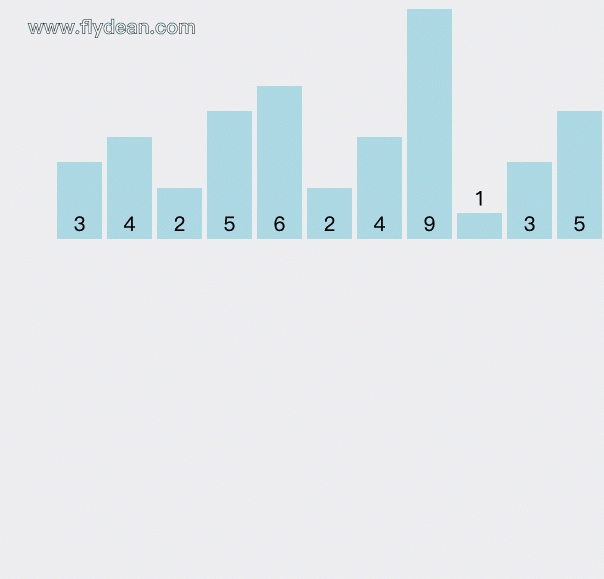06-algorithm-count-sort
6. 排序-count排序
简介
今天我们介绍一种不需要作比较就能排序的算法:count排序。
count排序是一种空间换时间的算法,我们借助一个外部的count数组来统计各个元素出现的次数,从而最终完成排序。
count排序的例子
count排序有一定的限制,因为外部的count数组长度是和原数组的元素范围是一致的,所以count排序一般只适合数组中元素范围比较小的情况。
我们举一个0-9的元素的排序的例子:3,4,2,5,6,2,4,9,1,3,5。
先看一个动画,看看是怎么排序的:

count数组里面存放的是从0到9这些元素出现的次数。
我们遍历原始数组,遇到相应的数字就给相应的count+1。
等所有的元素都count之后,再根据count数组中的值还原排序过后的数组。
count排序的java实现
count排序很简单,我们主要掌握下面两个大的步骤:
遍历原始数组,构建count数组。
根据count数组中的count值,重新构建排序数组。
上面的注释应该很清楚了。
运行的结果如下:

count排序的第二种方法
在我们获得count数组中每个元素的个数之后,其实我们还有另外一个生成结果数组的办法:
主要分为两步:
第一步我们根据count中元素出现的次数计算对应元素第一次应该出现在output中的下标。这里的下标是从右往左数的。
第二步根据count中的下标,构建排序后的数组,插入一个之后,相应的count下标要减一。

可能不是很好理解,大家可以结合输出结果反复琢磨一下。
count排序的时间复杂度
从上面的代码我们可以看到,count排序实际上只做了少量次数的遍历。所以它的时间复杂度是O(n)。
本文的代码地址:
本文已收录于 www.flydean.com
最通俗的解读,最深刻的干货,最简洁的教程,众多你不知道的小技巧等你来发现!
欢迎关注我的公众号:「程序那些事」,懂技术,更懂你!

最后更新于
这有帮助吗?